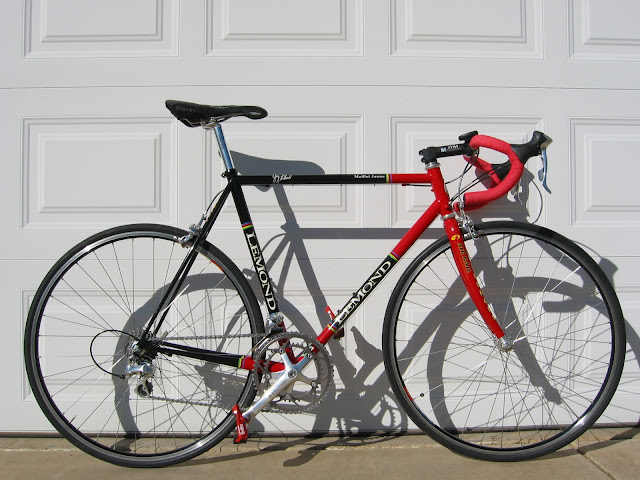The human body can be both highly specialized and yet hugely adaptable if given a little time. I am a relatively fit cyclist, and I can hold my own against most people my age or even younger. Pit me against runners at a similar fitness level, and I would fail miserably. I simply don't use the same muscle groups or have the built up capillary infrastructure to deliver energy and oxygen to those running muscles.
When I first started riding the Jones, the position changed enough to where I struggled. I felt slow, and my first rides left my muscles feeling sore for about a week. New muscles were being utilized, and my body was trying to adapt. When it did adapt, I felt as fast and sometimes faster on the Jones.
As mountain bikers our genesis and evolution is a complex one. While the origin is often traced back to guys riding old clunkers, the guys who started making the first purpose-built frames had road racing backgrounds. So it's no mystery that the early mountain bikes looked a lot like road bikes. Compare my 1987 Fisher to my LeMond below it:
Short, horizontal top tubes, short head tubes and similar angles. We were forced to use ridiculously long stems to compensate, which made early mountain bikes endo machines. We endured these horrible bikes for quite some time because we didn't know any better.
Eventually someone broke the mold and sloped a top tube. Head tubes lengthened. Top tubes lengthened. Stems shortened. Head tube angles relaxed. The world rejoiced.
Which brings me to my recent experiments, which are all being performed in an effort to relieve some stress on my bad wrist and neck. I never intended for the Surly Sunrise bars to go on a conventional mountain bike. They simply looked cool and I thought they might be fun on my 26-inch travel bike. They sat unused for years.
Pain has a funny way of motivating you, though, especially when you are experiencing that discomfort doing something you love. The success of the Jones has opened my eyes to the "might as well try it" school of thought. I eyed the bars collecting dust in the corner of my office and thought, why not? Even if they are wider, taller and have more sweep than any riser bar I have ever used, why not?
On the first couple test rides around my home, they felt strange but not bad. The cockpit was shorter and much taller, and that alone may have been a deal breaker had the Jones not already prepared me for it. The 15 degree bend was a noticeable improvement, enough to relieve some pressure on my wrist but still feel like a riser bar. They were uncomfortably wide, though.
I used them for a real mountain bike ride today for the first time—23 miles on rolling terrain, mostly singletrack. When I rolled away from the car I actually didn't notice the bars at all. I adapted.

On the trail they were great. The entire ride was so much fun. I was really hauling ass down some descents, probably getting in over my head a couple times. But those big bars just made me feel invincible.
Climbing is certainly more upright, but not altogether horrible. On the few occasions when I felt like going fast I simply bent my elbows a bit and attained a more familiar climbing position. But you can also sit up and take a look around if you want, an option you don't have with a low-rise bar.
In the end my takeaway is this: There are a lot of ways to skin that cat. Striving to be more comfortable doesn't necessarily mean giving up speed and handling. In this case, handling and downhill speed actually improved.
So experiment, try different things, keep an open mind (which hasn't always been the case for me) and have fun.
Later.


No comments:
Post a Comment